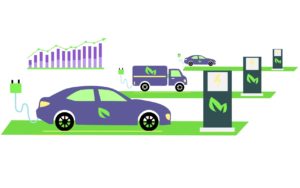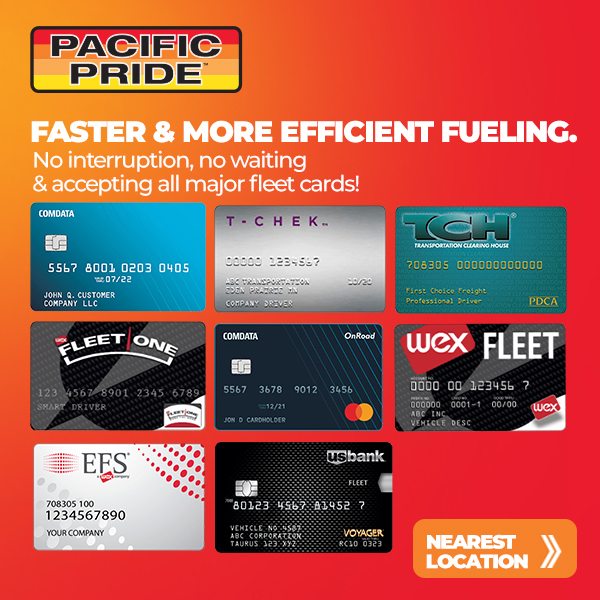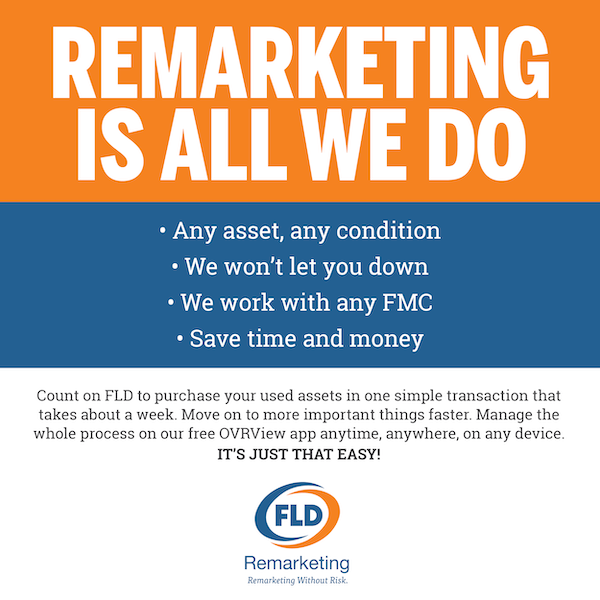
By Ed Pierce, Contributing Editor
April 17, 2022
Making the transition from internal combustion engine (ICE) vehicles to electric vehicles (EVs) can be daunting for many fleet operators. In order to electrify your fleet, you need to procure the right EVs, ensure a consistent and reliable charging infrastructure that supports your business and drivers, and learn how to operate a new class of vehicle with its own distinct rules.
While many companies offer solutions for one or some of these challenges, no company has worked with light and medium-fleet businesses to comprehensively tackle all of the requirements for electrification—until Inspiration, says Inspiration Mobility CEO Josh Green.
Simplifying The Transition
 Inspiration is a purpose-built EV Solutions Company, advancing the electric vehicle transition. They partner with fleet businesses to finance, build, own, and operate the real assets that enable a rapid and profitable deployment of EVs.
Inspiration is a purpose-built EV Solutions Company, advancing the electric vehicle transition. They partner with fleet businesses to finance, build, own, and operate the real assets that enable a rapid and profitable deployment of EVs.
“Inspiration is the world’s first integrated EV Solutions Company,” says Josh. “For electrification to really take off, we decided to bring together capabilities and skills from previously disparate industries into one organization that could solve the myriad problems and address the different barriers that fleets face as they seek to transition an ICE fleet to electric vehicles.”
Inspiration works with its customers to overcome all barriers to electrification, making it as easy for fleets to go electric as it is for them to buy another ICE vehicle or in fleet a Toyota Camry or pickup truck. Commercial fleets are often challenged by foreign concepts such as utility rate structures and energy infrastructure, anxieties around range or charging availability, and the higher upfront costs of EVs. Inspiration was designed from the ground up to help fleets manage the transition, whether they require a complete fleet-as-a-service solution or support with one or two key elements such as vehicle financing or charging.
An Integrated EV Solution
Unlike other companies that only handle the procurement and financing of EVs and refer their clients to partners that manage their charging needs, Inspiration designs an integrated system, including vehicles, charging hardware, charging management software, etc., to address each customer’s needs.
“We aren’t tied to any specific vehicle OEM, nor are we tied to a hardware or software provider on the charging side,” says Josh, “Everything we recommend for a fleet is a custom strategy. We can offer both the charging and the fleet, bundle those things together in a fleet as a service offering, or do as little or as much as the customer needs.”
Inspiration goes deep into the vehicle use-cases to examine which routes and vehicles are most attractive for electrification now and in the future. They examine factors like daily mileage, duty cycles, vehicle dwell times and locations, and customer business models in order to help customers map their transition towards electrification. This results in a strategy tailored to each customer’s unique needs, rather than what a vendor wants to sell.
Barriers To Adoption
Fleet managers face certain challenges in transitioning from ICE vehicles to EV. The requirements, processes, metrics, and internal stakeholders continue to evolve during the transition, and each needs to be approved internally. Fleet managers must also match each of their current ICE vehicles to a substitute EV, a process complicated by limited vehicle and model availability. This is one of the key areas in which Inspiration offers assistance. They work with the customer to suggest which EVs best meet the needs of the company and the use case, including those EVs already in the market and those coming over the next 12-24 months.
 “The current landscape of EV options in the market is evolving rapidly, driven by the global shift to carbon neutral fleets,” says Jeff Schlesinger, Managing Director, and Head of Fleet for Inspiration. “And many fleet managers are looking for assistance in plotting and implementing their transition. Inspiration currently focuses on light and medium duty vehicles and can assist in each of these classes.”
“The current landscape of EV options in the market is evolving rapidly, driven by the global shift to carbon neutral fleets,” says Jeff Schlesinger, Managing Director, and Head of Fleet for Inspiration. “And many fleet managers are looking for assistance in plotting and implementing their transition. Inspiration currently focuses on light and medium duty vehicles and can assist in each of these classes.”
As more companies seek to electrify, it’s created a supply chain issue as well as a pent-up demand for EVs in the near future. With the help of Inspiration, however, fleet managers can develop a process and plan for the next few years and secure limited production as new EV models come to the forefront.
Charging also presents an issue for fleet operators looking to electrify. It’s a foreign concept to fleet operators comfortable in dealing with traditional fueling for ICE vehicles. When switching to EVs, they are suddenly required to devise an entirely new strategy for charging their vehicles and being dependent on the sometimes-scattered availability of public charging stations can be risky. Luckily, Inspiration works with clients to determine what their charging needs are, and which vehicle routes are most conducive to handling EVs.
“That’s another area where we really do in-depth studies upfront to understand,” says Josh. “Is this going to require high-speed depot charging? Can they do it on their current site or do we need to find a different site? Is it going to be at-home charging of employee vehicles that go home at night? Many fleets will require a range of different solutions to electrify all vehicles and routes.”
Although the installation of charging infrastructure is a long-term process, volatile gas prices make a compelling argument to fleet managers to start investigating electrification sooner rather than later. The earlier they begin developing a charging strategy, the sooner they can install the right charging infrastructure to make the transition as seamless as possible.
Benefits Of Electrification
Certain benefits await fleet managers willing to begin the process of electrification. Not only is electricity less expensive and volatile than fossil fuel sources, but EVs also require less maintenance and downtime. Most applications can already be electrified, earning economic benefits right out of the gate, and helping companies meet corporate targets of carbon reduction.
“Every day that you hesitate is another day that you’re losing money relative to an electric fleet,” says Josh, “Once you solve the charging and have a plan so that you’re comfortable that there will be no operational risks, the economic benefits are pretty compelling in their own right.”
Fleet operators who electrify sooner rather than later are also given an opportunity to position themselves ahead of the competition. Leaders in electrification who lock up vehicle supply and deploy their charging infrastructure quickly and efficiently will end up ahead of the game. They will also stay ahead of city and state mandates that are pushing the drive towards electrification.
“In many states and cities, high-mileage fleets like long haul transport, taxis and ride hail, and last mile delivery will eventually be required to electrify,” says Josh. “A lot of these vehicles and companies face a license to operate risk, and that’s another benefit of getting started in the process early. It’s a combination of cost reduction, risk reduction, and a benefit in your competitive positioning relative to others in your industry.”
Inspiration Customers
Inspiration deals primarily with four types of customers. The first is corporate fleets, which includes both large corporate fleets as well as small and medium sized businesses that don’t primarily focus on transportation but use vehicles as a tool of the business. As most of these vehicles go home with employees at night, the vast majority of them can be electrified profitably and quickly.
The second type of customer is for-hire vehicles such as taxis, ride-share, and livery services. These vehicles require custom solutions depending on the city and the fleet, as they usually end up in very different areas at the end of the day. The third type of customer is mobility companies who are installing electric vehicles from the start rather than switching from ICE vehicles. These include electric ride hail companies like Revel, one of Inspirations’ first customers, as well as electric car share, car rental, and subscription companies.
The last type of customer Inspiration works with is last mile delivery and service fleets, which usually rely on a central depot charging solution to serve the needs of the vehicle and the driver. For each customer segment, Inspiration has a concrete differentiated value proposition suited for the business to accelerate electrification.
Inspiration Partners
Given the pace of change in the electric vehicle ecosystem, Inspiration works with a wide variety of partners to package and deliver the best solution to fleet customers. Customers benefit from the Inspiration team’s deep, cross-functional experience across fleet, automotive, energy and infrastructure, interacting with only one organization for all their EV fleet needs. Meanwhile, behind the scenes, Inspiration works closely with all EV OEMs and all charging companies to enable a deep charging ecosystem for customers. They also partner with telematics and other emerging technology companies to help customers track and manage their EV fleets to ensure the lowest total cost of ownership and the optimal vehicle for each use case.
For asset funding, vehicle management, and infrastructure, however, Inspiration keeps things in-house. “We act as a systems’ integrator or general contractor, pulling together the best solutions across the ecosystem and integrating them on behalf of our customers,” says Josh.
Next Steps for Fleet Operators
For fleet operators looking to begin the process of electrification, the next steps are simple: Inspiration conducts a free transition assessment to help develop a phased electrification plan based on their existing vehicle fleet, routes, duty cycles, and more. They identify which vehicles make sense to begin with and what charging needs to be implemented in order to make the transition.
Inspiration then finances the upfront cost gap and the charging, giving fleet operators a comprehensive, easy-to-understand price that they can factor into the total cost of ownership analysis. This makes it easy to see the compelling levels of savings that fleet operators can achieve as they begin the years-long transition towards electrifying their fleet.
“We recommend people start immediately,” says Josh. “Get an assessment done, begin the conversation, and begin to talk to and understand the incentives that are available for changing out to electric vehicles because that varies by city, state and utility territory.”




